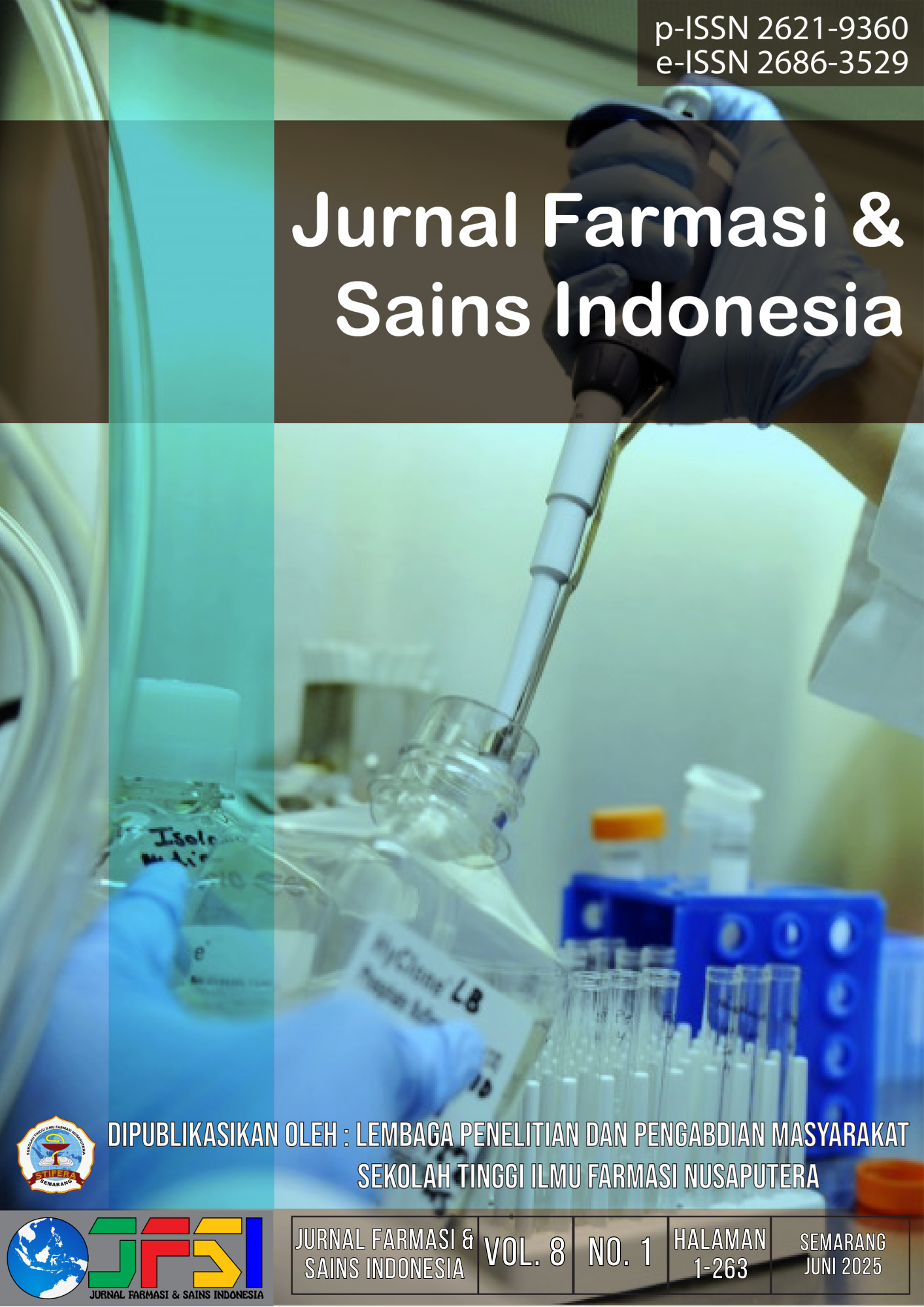Formulation and Effectiveness Test of Antipyretic Patches of Ethanol Extract of Guava Leaves (Psidium guajava L.) in White Mice
Main Article Content
Abstract
Guava leaves (Psidium guajava L) are one of the traditional medicines empirically used by the community in Indonesia for fever treatment. Guava leaves (Psidium guajava L) contain several compounds, one of which is flavonoids, which play a role in antipyretic activity. This study aims to determine the effectiveness of the formulation of guava leaf extract patches (Psidium guajava L) in reducing fever in white rats, and to identify the most effective concentration of the guava leaf extract patch formulation (5%, 10%, and 15%) in lowering fever in white rats. This study used a True Experimental Design (Posttest-Only Control Design).
The test subjects in this study were 25 white rats divided into 5 groups. The positive control group was given a "Bye-bye Fever" patch, the negative control group was given a patch without extract, and the three treatment groups were given guava leaf extract patches with concentrations of 5%, 10%, and 15%, respectively. Fever induction was performed by injecting the test subjects with5% peptone (2 ml) intraperitoneally. Rectal temperatures were measured before and after the administration of 5% peptone and following the application of the test material at 15,30, 45, 60,75, 90, 105,120, 150, and 180 minutes.
The results showed that the administration of ethanol extract patches from guava leaves (Psidium guajava L) at a concentration of 15% reduced rectal temperature more significantly compared to concentrations of 10% and 5% over a period of 180 minutes. In this study, the 15% concentration of ethanol extract from guava leaves proved to be the most effective antipyretic concentration.

